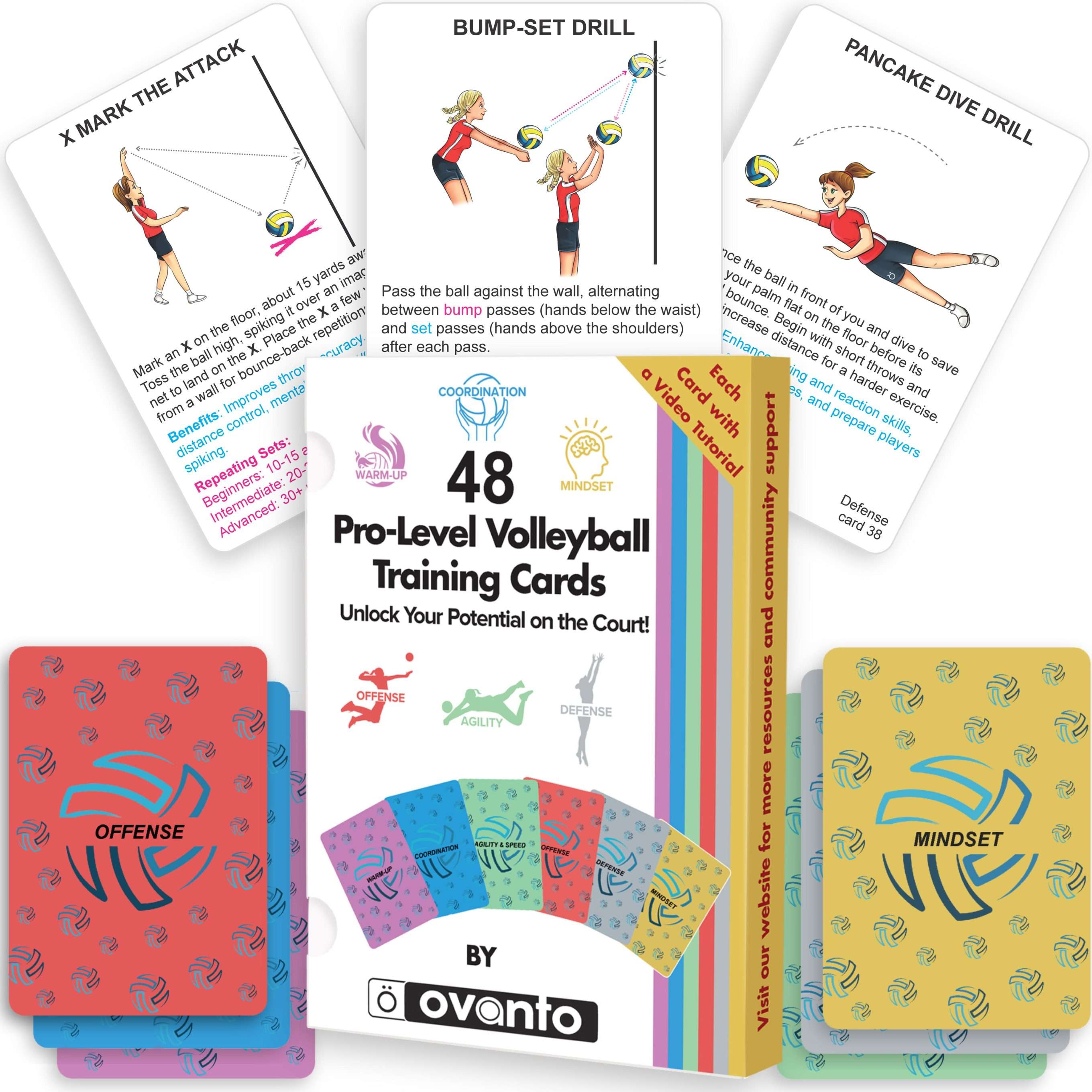Top 10 Volleyball Terms Every New Player Should Know (With Tips)
Essential volleyball terms every beginner needs to know.
By Ovanto.org Team

This article is in sync with our mission to contribute to the development of health culture and the growth of all disciplines of volleyball. We provide informative and educational content about volleyball training and the benefits of playing the sport.
Introduction:
If you’re new to volleyball, the sport can feel overwhelming—not just physically but linguistically. From “kills” to “digs,” the game has a language of its own. But don’t worry: mastering the basics starts with learning the lingo.
In this article, we’ll walk you through the 10 most important volleyball terms every beginner should know — along with practical examples, beginner tips, and how each concept fits into the flow of the game.
1 – Serve
Definition: The action that starts each rally, where one player hits the ball over the net from behind the baseline.
In Action: A player tosses the ball up and strikes it with their palm to get it over the net to the opposing team.
Types: Underhand, overhand, float, jump serve.
Why It’s Important: A strong, well-placed serve can disrupt the opponent’s formation, and sometimes earn an ace (point directly from the serve).
👉 Beginner Tip: Start with a consistent underhand serve to develop control before moving to overhand or jump serves.

2 – Pass (Bump)
Definition: The first contact after a serve, used to control and direct the ball to the setter. Typically performed with forearms together.
In Action: The opposing team serves the ball. You get low, arms out, and guide the ball toward your setter.
Why It’s Important: Everything starts with a good pass. If it’s off-target, your team will struggle to run an attack.
👉 Beginner Tip: Keep your elbows straight, hands together, and move your feet to get in front of the ball instead of reaching sideways.
3- Set
Definition: The second touch in a standard play, designed to position the ball for a hitter. Typically done overhead using fingertips.
In Action: After a clean pass, the setter positions under the ball and pushes it into the air for a hitter to spike.
Why It’s Important: A precise set can mean the difference between a kill and an easy block for the opposing team.
👉 Beginner Tip: Focus on soft, controlled finger contact and keep your hands shaped like a ball over your forehead.
4- Spike (Attack/Hit)
Definition: A forceful shot aimed at scoring a point by hitting the ball down into the opponent’s court.
In Action: After a set, you approach the net, jump, and strike the ball with a downward motion.
Why It’s Important: Spikes are the main way teams score. They combine timing, power, and strategy.
👉 Beginner Tip: Don’t focus only on hitting hard—focus on timing your approach and contacting the ball at your highest point.

5 – Block
Definition: A defensive move where front-row players jump at the net to stop or deflect an opponent’s spike.
In Action: As the other team’s hitter jumps, you jump too, hands extended above the net to intercept the ball.
Why It’s Important: A well-timed block can shut down the opponent’s best hitter or force them to change strategies.
👉 Beginner Tip: Keep your eyes on the hitter’s shoulder and hand, not the ball. Press your hands over the net instead of just jumping vertically.
6 – Dig
Definition: A defensive move to prevent the ball from touching the court after an opponent’s attack, typically done with a forearm pass or dive.
In Action: A hitter spikes the ball toward your zone. You drop low, extend your platform, and dig the ball up into the air.
Why It’s Important: Digs allow your team to recover and transition from defense to offense.
👉 Beginner Tip: Stay low and balanced before the hit—don’t wait to react from a standing position.
7 – Ace
Definition: A serve that lands untouched or is mishandled by the receiving team, resulting in a direct point.
In Action: You serve the ball, and it lands in a gap between players or is mishandled out of bounds.
Why It’s Important: Aces are powerful momentum changers and boost team energy instantly.
👉 Beginner Tip: Aim for seams between players rather than targeting one directly—miscommunication often creates aces.
8 – Rotation
Definition: The clockwise movement of players after gaining the right to serve.
In Action: Your team wins a point on the opponent’s serve. Everyone rotates one position clockwise before the next play.
Why It’s Important: Rotations dictate who plays in the front or back row and impact strategies, especially for setters and hitters.
👉 Beginner Tip: Know your starting spot and pay attention to rotation rules to avoid position faults or illegal overlaps.
9 – Libero
Definition: A specialized back-row player who wears a different-colored jersey and focuses on defense and passing.
In Action: The libero replaces a front-row player in the back row without counting as a substitution and handles most serve receives.
Why It’s Important: The libero ensures high-quality passing and digs without being involved in attacking plays.
👉 Beginner Tip: If you’re not tall but have good reflexes and ball control, the libero role is ideal for you.
10 – Kill
Definition: An attack that results in an immediate point—either because it hits the ground untouched or is unreturnable.
In Action: After a perfect set, the outside hitter spikes the ball into the back corner where no defender can reach it.
Why It’s Important: Kills are the result of well-coordinated team plays and are key to scoring consistently.
👉 Beginner Tip: Learn not just to hit hard, but to find open spaces in the opponent’s defense—deep corners, tips over blocks, or roll shots can all be effective.
👉 Ready to put these terms into practice?
Check out our Volleyball Training Cards with drills and exercises designed for every skill level — from beginner to advanced.

Final Thoughts
Volleyball is as much about team communication and court awareness as it is about athletic skill. Learning these 10 key terms gives you a strong foundation to understand the flow of the game and participate more confidently.
By mastering these basic terms, you’re not just speaking the language of volleyball — you’re also laying the groundwork to play smarter, support your team better, and eventually dive into more advanced strategies.
Disclaimer:
The content of this article is intended for general informational purposes only and is designed to support new volleyball players in understanding basic terminology. While every effort has been made to ensure accuracy, volleyball rules and interpretations may vary by level, league, or coaching style. This article is not a substitute for formal training, official rulebooks, or personalized coaching. The author and publisher are not responsible for any misunderstandings or misapplications of the information provided. Readers are encouraged to consult certified coaches or governing bodies for specific guidance and official regulations.







